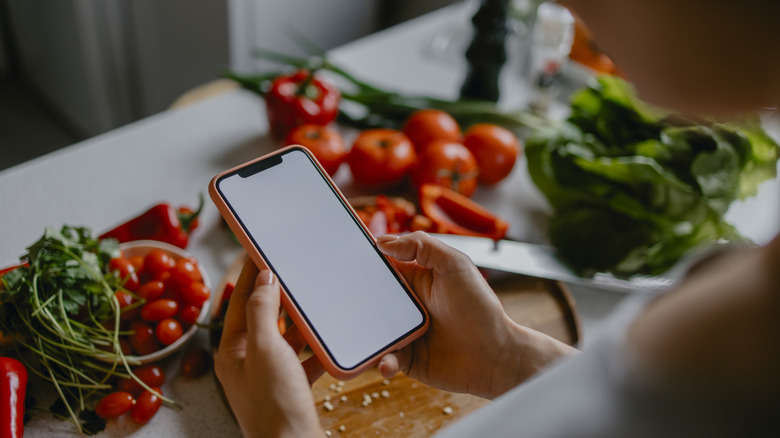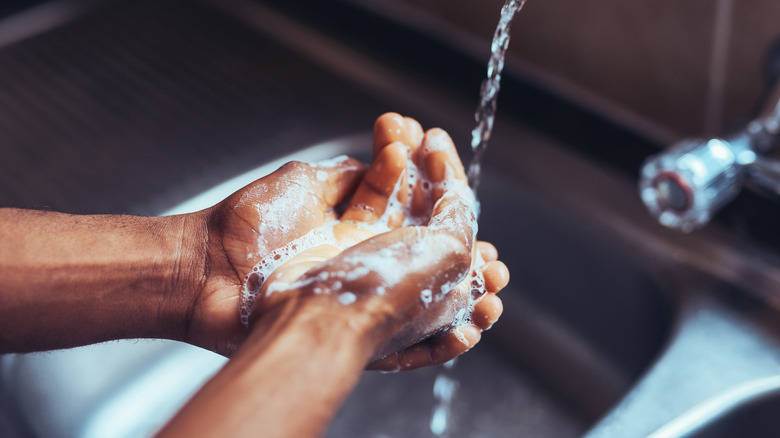Using Your Phone While Cooking Could Be A Major Food Safety Mistake
Gone are the days of stuck together and warped cookbook and magazine pages, dog-eared to our perennial go-to recipes. Nowadays, the options for collecting recipes are endless. Just a social media bookmark, browser folder, or screenshot will keep an infinite amount of dishes to play around with at your fingertips. But when it's time to get cooking, keeping your phone handy to reference your recipe is not the safest move.
Given their near incessant contact with human hands, the Seattle Times reports that cell phone screens are swimming with bacteria and, on average, have over 25,000 of them per square inch, which is "18 times more bacteria than a flush handle in a typical men's restroom."
So when you're in the kitchen and pick up your phone right before you grab that cucumber for your raw salad, you are potentially transferring dangerous bacteria to your food. According to an FDA survey, a whopping 48% of all people use their smartphones while cooking. Whether you're checking to see how many tablespoons you need, pulling up your Spotify playlist, or texting your friend back, there are a few precautions you can take to mitigate this transfer of potentially harmful bugs to your food.
How to use your phone while cooking and maintain food safety
The first precaution you can take is the most obvious: Wash your hands. Of the nearly half of people using their phones in the kitchen, only 35% of them are washing their hands with soap after doing so. Be more mindful of every time you pick up your phone and treat touching it as you would raw poultry or meat — that is, immediately soap up and scrub with hot water.
You can also try just using a knuckle to tap or scroll what needs to be accessed. The "Hey Siri" or "Hey Google" voice functionality may come in handy as well if you want to skip a song or set a timer. And an easy tip that's often overlooked is to turn off the screen's auto-lock feature. This will save you from facing a black screen every time you go to double-check how many teaspoons of salt are needed, saving you from dirtying those digits and requiring repeated washes.

